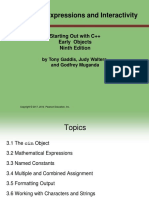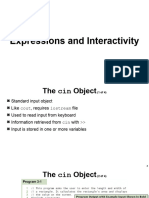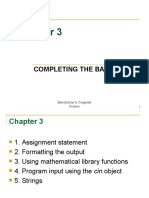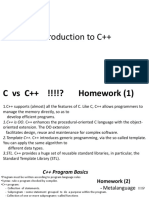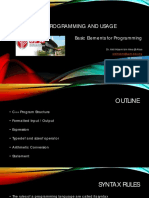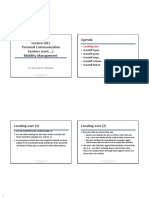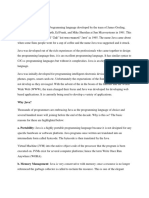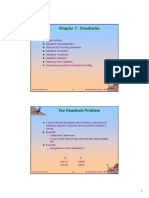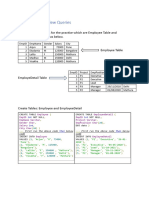0% found this document useful (0 votes)
27 views42 pagesECE151 - Lecture 3
The document provides an overview of programming concepts in C++, focusing on user input with the cin object, mathematical expressions, type conversion, and file handling. It explains how to manage data types, perform operations, and format output, along with examples of using constants and string manipulation. Additionally, it covers file input and output, emphasizing the importance of including necessary headers and managing file streams.
Uploaded by
shafee001Copyright
© © All Rights Reserved
We take content rights seriously. If you suspect this is your content, claim it here.
Available Formats
Download as PDF, TXT or read online on Scribd
0% found this document useful (0 votes)
27 views42 pagesECE151 - Lecture 3
The document provides an overview of programming concepts in C++, focusing on user input with the cin object, mathematical expressions, type conversion, and file handling. It explains how to manage data types, perform operations, and format output, along with examples of using constants and string manipulation. Additionally, it covers file input and output, emphasizing the importance of including necessary headers and managing file streams.
Uploaded by
shafee001Copyright
© © All Rights Reserved
We take content rights seriously. If you suspect this is your content, claim it here.
Available Formats
Download as PDF, TXT or read online on Scribd
/ 42



